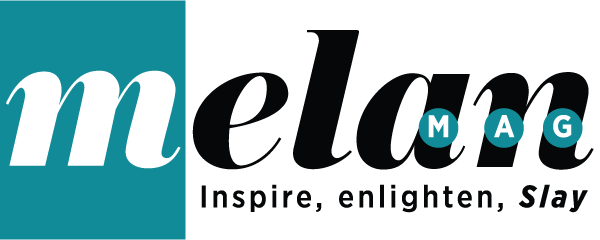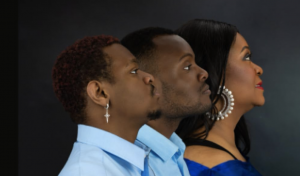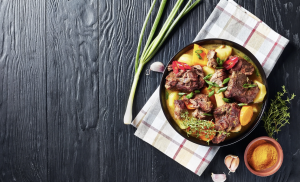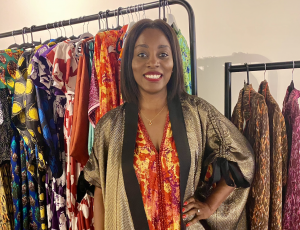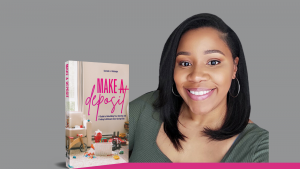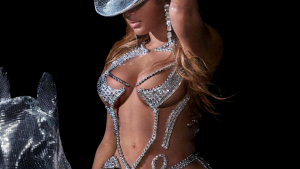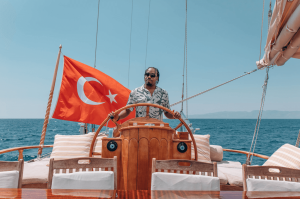Marilyne Kekeli is the founder of Mamater an ethical fashion jewellery brand providing beautiful, wearable pieces of art. In our exclusive interview we learn more about her journey and why her jewellery is for women who want to live and look good.
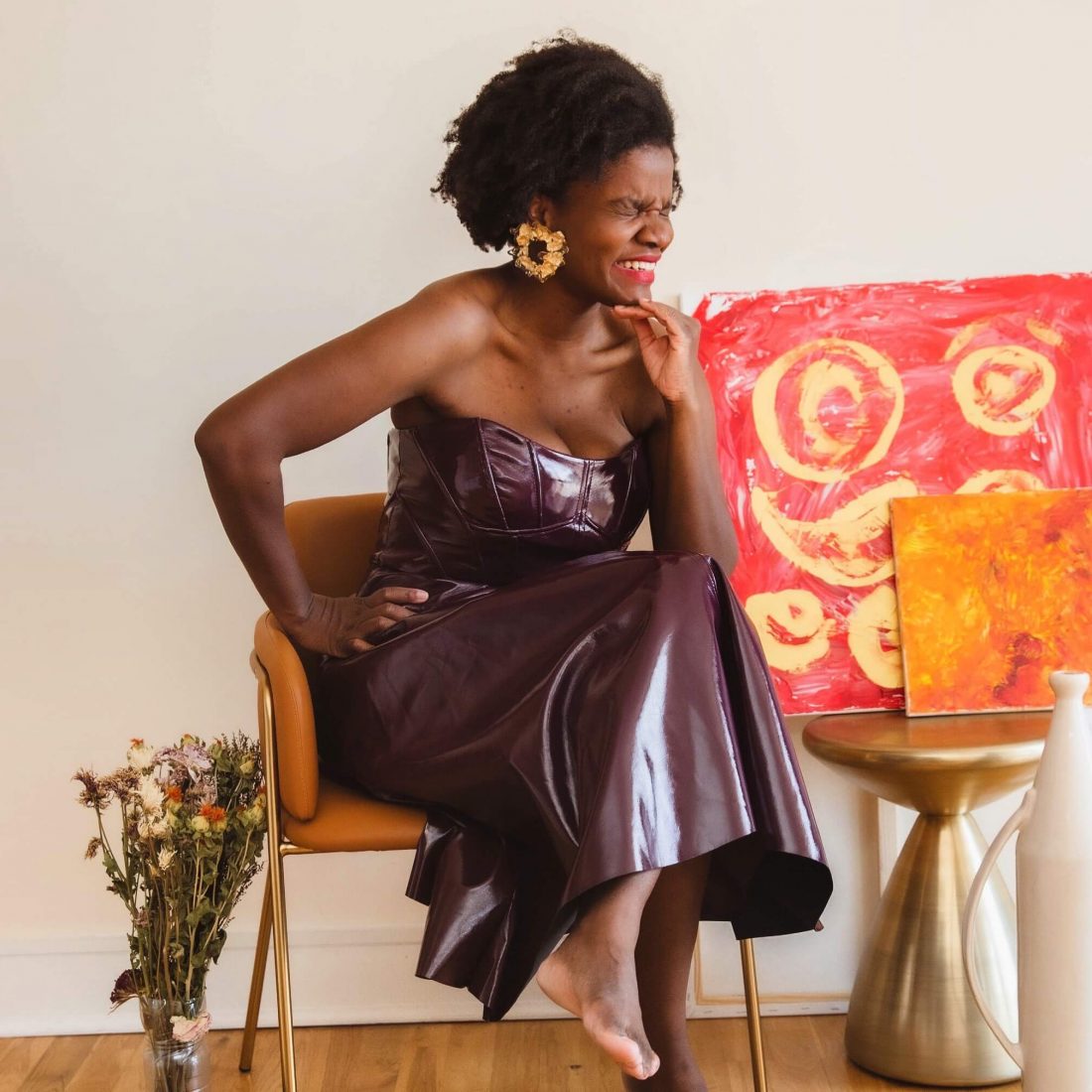
An entrepreneur and former strategic manager Marilyne Kekeli launched her business to create versatile pieces that are suitable for work and play. Her jewellery designs give a unique edge whether the wearer is in a board meeting, cocktail party or even at brunch with the girls. Marilyne describes her design pieces as “for stylish women who want to make a statement in every room they walk into.”
With a lengthy and successful career as a strategic manager working for large multinationals around the globe, including Prada; Marilyne has always been conscious of the importance of looking the part. Combining this knowledge with her love of mother nature, heritage and jewellery, Marilyne created her jewellery brand, Mamater, a play on the French words for Mother Nature.
The Interview…
Why did you get into the fashion jewellery business?
My profession originally is as a strategy consultant, so I worked for large multinationals in the banking sector, primarily in finance, in France, in Asia but also in the UK. I was working very often in settings where I had to make very big presentations in front of very senior stakeholders. Jewellery was part the way you were going to express your personality, so to speak. Also, at the beginning of my career, I worked for Prada in Paris. I was really interested in luxury and fashion and so I took a sabbatical around 2018 to retrain, to consider what I wanted to do next in my career, because I was getting to that stage where I was a bit tired of working in banking.
I came back to Paris [ Marilyne is French] where I’ve been spending the lockdowns. I came back to Paris to take a bit of time to reset and think through. I retrained in jewellery because I was always interested in jewellery and I always liked it.
I find it a good and interesting expression of my creativity and because I used to be a woman who would need jewellery to present herself in the world, and so therefore I really resonate with my customer on that end.
What is your career background?
I’ve got about 14 years of experience working in the banking sector primarily and in the finance sector as a strategy consultant. I’ve led strategic projects and programmes, I have helped companies buy other companies, so that’s been the essence of what I’ve done. I’ve always been interested in doing big things, strategic things, but I also had that creative hat on my head, which I was always interested in expressing. You get to a point in your life where you can make a decision regarding whether you want to continue what you’re doing or explore something else and I’m someone who’s not afraid of challenges or re-inventing herself.
“It’s always quite important to introduce yourself to the topic and train yourself.”
Did you need specialist training to start your business and become a jeweller?
Yes absolutely. You have to understand the materials in specifics to where things come from, because one of the big questions in jewellery is about sustainability. It’s around where materials are coming from. Gold is not mined in the UK at all, it is mined in countries like Ghana and Tanzania. It’s always quite important to introduce yourself to the topic and train yourself.
When I’m speaking to someone who is interested in jewellery, I would say the first step is go on YouTube and learn about what information is out there. Specifically follow some YouTube influencers or people who are jewellery makers who show how they actually make jewellery, from the materials all the way to the finished product. Some of them even teach you, so you can reach out to them and they can give you private classes. You also have the London School of Jewellery and you can have some classes at the Goldsmith Centre, so there’s quite a number of places where you can get trained.
The important thing to remember is it’s a craft, so it’s nothing you would apply for at university, you have to work individually with individuals. You’re going to have small classes and it’s actually transforming materials, it’s quite specific.
I’m currently working with workshops in Paris who actually transform pieces and make pieces for my brand.
Why did you name your brand Mamater?
When I changed my career, I took a sabbatical. I was thinking about what I wanted my brand to be named after and it was important to really link it to who I was. I wanted something that went with the essence of who I was. I kept on thinking ‘what is the essence of who you are and how does it connect?’.
I’m someone who’s very down to Earth, I like to connect with nature. I love going into parks and into nature, I also connect very much with where I was born, with my homeland, with my origins. All these things felt like it needed to be something about homeland and connection to nature.
I use the French word terre Mère, which means Mother Earth, because I’m very interested in nature and climate change. If you change the way you write it, it’s pronounced Mamater. It was easy for me because one, it had that connection, but also it was easy for people to pronounce, whether you’re speaking English or French you would pronounce it in the same way. It felt like something people could universally connect with.
What stands out about your brand compared to others within the same market?
For me it’s simple, I make specific statement pieces which are artistic. They are pieces that within themselves you could place on a shelf and see it as a piece of art. They are very specifically tailored for individuals who want to present themselves in a certain way. You could wear them at 20, you could wear them at 50, you could wear it all your life. It’s easy, it’s simple, you just put on your outfit and you just put on your jewellery and they stand out. They’re pieces of art within themselves and they support you all throughout your life and every day.
I make the equivalent of a three-piece suit in jewellery. It works all the time with anything you are wearing. That’s what I do.
“I make the equivalent of a three-piece suit in jewellery. It works all the time with anything you are wearing.”
What inspired you to start Mamater?
I had worked for so long in services and supporting people. I wanted to get to the essence of actually creating something with my hands and bringing something out into the world. I was also interested in the topic of ethical jewellery. I wanted to really make a difference in that space, create things which actually bring value to people and support that coast.
In terms of inspiration, I was born in Togo which is a small country on the West Coast of Africa, just next to Ghana. Growing up, I was seeing a lot of very lush greenery and flowers. Also, very distinctive forms of art which is quite similar to what people call surrealism or cubism; that people like Picasso were inspired from. I couldn’t really see it in a lot of jewellery that we’re seeing, so we’re seeing stuff that was out there, but I didn’t quite see a lot of jewellery that would distinctively look like that.
What inspires you to create?
I typically start by visuals, so I always have a ton of mood-boards which show all sorts of things, and I try to be interested by lines and spaces and gaps and so on. Then I start reducing them.
Some people start by drawing, I do the opposite. I start by seeing people operate in nature and images that inspire me. I have a ton of Pinterest boards; I slowly choose colours and patterns that I’m interested in and I really bring them down to a small selection. This then helps me and inspires me to start creating beautiful Mamater jewellery.
The selection is around images, colours, shapes, movements and all that kind of stuff. That’s my process specifically and then once I’ve done the drawing, I start working with clay in terms of materials. I start working on 3D models in the workshop and then we start doing a bit of production and then repeat on that.
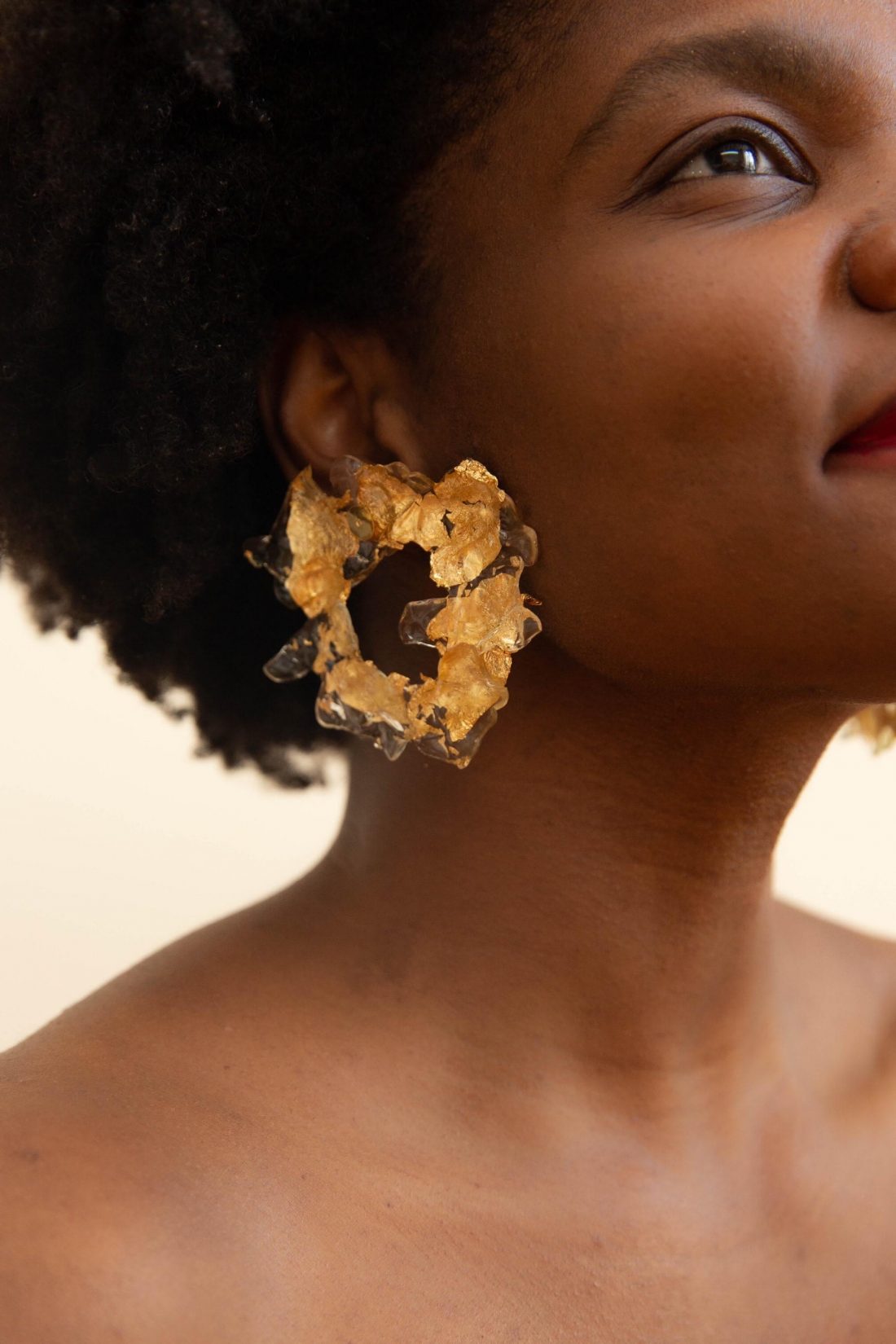
How do you stay inspired to create when you reach a creative block?
I believe when you have creative block, I just think that you just have to accept it. Expressions come over time and for me creative block is just because you’re tired and you know you’re running out of steam; your brain is not there. When I stumble into creative block, I just take time off and rest. Try to read a book or see something different like go to an exhibition.
“I don’t really see it as jewellery, I see it as pieces of art that is gifted to you that you can wear…”
Who do you design your jewellery for?
I was asked this question a year and a half ago and at the time I said I designed for women who used to be like me. I would actually change my discourse a little bit now. I think fundamentally I am designing Mamater jewellery for women who are receiving tokens of love, whether those tokens are from herself, for example, she appreciates herself, she values her accomplishments and where she’s going. Therefore, she gifts pieces of art which enable her to enhance her look and her appearance. Or it could be something that someone gives her as a token of commitment and appreciation. Again, I go back to this idea of them being artistic pieces, I don’t really see it as jewellery, I see it as pieces of art that is gifted to you that you can wear, but you can also display in a room.
Read more Melan-In Business features
How is your jewellery ethical and why is that important to you?
There are a few interpretations of ethical, which I really want to put out there. I’m not saying the material is ethical because every single material in my jewellery is recycled, that is not the case. There are many different ways in which people define ethical. For me, one of the challenges in the industry is some people just use it as a general banner, but don’t actually explain how their brand is ethical.
“Across the supply chain in jewellery, you have a lot of exploitation, it’s terrible to say.”
My specific interest in ethical is around the idea of fairness and fair pay, essentially the idea of not exploiting people, that’s fundamentally what I’m interested in. Across the supply chain in jewellery, you have a lot of exploitation, it’s terrible to say. When you compare the amount of money with what the miners are being paid for, compared to the price of the final piece of jewellery. You can see there’s a significant gap between the person doing the gruelling work, which is actually sometimes very deadly; they could die from mining in the ground, versus how much they get paid for that. For me, that gap is far too wide, and I’m interested in working with materials and pieces that actually pay more for those individuals.
That’s the specific area where I focus on. The way I do it is I work with materials which are specifically sourced from mines that are fair trade. I’m a registered Fair Trade UK Goldsmith, Mamater uses specifically buy gold and silver which comes from mines that are fair trade. I specifically ensure that when I work with a workshop, for example, that the workshop is paid fairly, the workshop has practices not to exploit their employees, and there’s a charter essentially, that all these different steps are being followed.
“I’m a registered Fair Trade UK Goldsmith…”
I can tell you for a fact, maybe something many brands won’t tell you, but it is sometimes very difficult to know where the stones are coming from. You don’t really have such a simple traceability process that enables you to know that if you use this semi-precious stone, for example, that it is actually mined here and it’s coming from there. Because of those challenges, I don’t use any semi-precious stones in my jewellery. I used to, but all the time I realised that it’s so difficult for me to even say where it’s coming from. It’s so difficult to receive and identify that actually I would prefer not using semi-precious stones going forward.
That’s my definition of ethical.
Visit the Mamater website.
